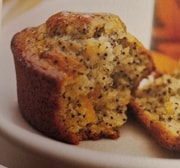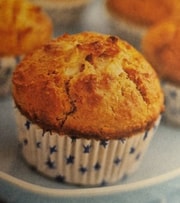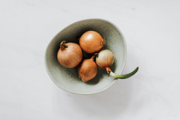Healthy baking tips for diabetics
By
- Replies 8
Cakes, biscuits, pies, and other pastries — what's not to love about baking, right?
The ability to create irresistible treats from scratch is a skill that's definitely worth learning. After all, there's no better way to show your loved ones how much you love them other than preparing a fresh batch of their favourite biscuits or a homemade cake.
However, it can't be denied that as we get older, we have to keep a closer eye on our health which often leads to some dietary restrictions.
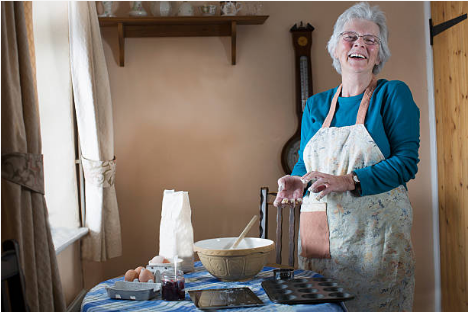
There's no better way to show your loved ones how much you love them other than preparing a fresh batch of their favourite biscuits or a homemade cake. Credit: Getty Images.
If you have diabetes, you may need to take special care when baking. Here are some tips to help you enjoy your favourite baked goods while keeping your blood sugar levels in check:
1. Use ingredients that have a low glycemic index
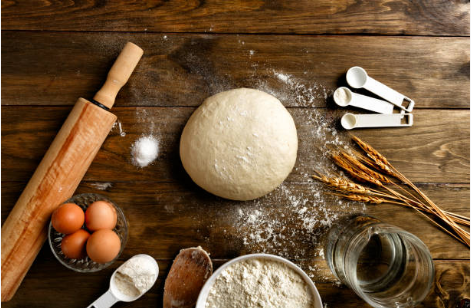
Swapping ingredients that have a high glycemic index with those that have a lower GI is ideal. Credit: Getty Images.
When baking, you can often reduce the amount of sugar called for in a recipe by one-third without affecting the taste or texture of the finished product by substituting ingredients with a high glycemic index (GI) with those that have a lower GI.
For our members who have not encountered the term "glycemic index" before, it is basically a unit of measurement for how a specific food will affect your blood sugar levels.
Foods with a high glycemic index will release sugar into the blood faster and cause the body to produce more insulin and subsequently a spike in your blood sugar, while foods with a low glycemic index will have a more gradual effect.
The glycemic index is a scale of 0 to 100, with 100 being the highest. The lower the number, the slower the sugar is released into the bloodstream.
So, what are some of the most common baking ingredients with high glycemic indices?
Some of the common baking ingredients that have high glycemic indices include:
If you noticed, the aforementioned ingredients are gluten-containing ingredients. For years, the practice of consuming gluten has been a topic of controversy among health and fitness enthusiasts.
It was said that gluten-containing flour is generally high in starch, which, in turn, has a high glycemic index.
Additionally, gluten can interfere with the body's ability to break down carbohydrates, which can also lead to a much quicker spike in blood sugar.
However, it should be noted that there are a number of misconceptions about consuming gluten-containing ingredients, with many people believing that gluten causes inflammation and reactions.
Internal medicine and obesity specialist Dr Selvi Rajagopal of Johns Hopkins Division of General Internal Medicine, said that gluten is "not inherently bad" for most people.
She explained: "We, as humans, have consumed gluten for as long as people have been making bread. For centuries, foods with gluten have been providing people with protein, soluble fibre and nutrients.”
"Gluten in itself, especially gluten found in whole grains, is not bad for healthy people whose bodies can tolerate it."
For a few of our members who are suspecting that consuming gluten has negatively impacted their health, Dr Rajagopal said that gluten can only be harmful to people suffering from the following conditions:
Source: Selvi Rajagopal, M.D. / Johns Hopkins Division of General Internal Medicine
So, how can we go about baking with this information in mind?
Gluten-free flour substitutes such as brown rice flour, almond flour, bran, chickpea, sorghum, tapioca flour, and coconut flour are good alternatives for gluten-containing flours with high glycemic indices.
For our readers who are not suffering from any conditions mentioned above and are allowed to consume gluten products, using whole wheat flour is also a good option as it contains a lower GI than white flour.
A caveat that you should keep in mind, however, is that most gluten-free flours don’t have a “stretch” to them, making the pastries “stiff” or “brittle” instead of a soft consistency.
It was advised that if you’re looking to prepare baked goods while keeping your blood sugar in check and without compromising the consistency of your pastries, you either use whole wheat flour or use a combination of gluten-free flour with gluten-containing ingredients such as baking soda and baking powder as long as your GP has given you a go-signal to consume gluten products.
2. Choose sugar substitutes
There are many sugar substitutes available that can be used in place of sugar in recipes. Some popular sugar substitutes include honey, agave nectar, maple syrup, and molasses.
However, did you know that these sweeteners are actually sugars themselves and have the same effects as regular white sugar when consumed?
Dietitians Mary Matone and Meredith Rofheart spoke to the Science Insider to discuss some of the most common myths about sugar, including a discussion on the use of honey and agave as sugar substitutes.
Ms Rofheart said: “We hear all the time, ‘if you want to cut sugar, instead of using sugar, use honey,’ the funny part of that is honey is sugar.”
“Honey and agave are commonly thought to be better sugars because they contain antimicrobial or antioxidant properties,” Ms Matone quipped.
However, for consumers to reap the antimicrobial benefits of honey and agave, they must consume a lot of these ingredients, which is not advisable as they almost have the same glycemic index as regular sugar.
Ms Matone explained: “What it really is coming down to is, how much are you consuming? Too much honey, too much agave, too much table sugar, are all going to have negative health consequences.”
WATCH: Dietitians Debunk 10 Sugar Myths
Credit: YouTube/Science Insider
So, what are some sweeteners that have low glycemic indices?
Experts at St Luke’s Health said that using stevia and erythritol as alternatives for table sugar can benefit those who are looking to keep their health in check.
It was said that stevia has a zero glycemic index and contains fewer calories than sugar. Aside from that, stevia does not change its flavour when heated, making it ideal for cooking, baking, and making hot drinks.
Meanwhile, St Luke’s Health’s website described erythritol as a form of naturally-occurring alcohol that the body does not process.
“Erythritol is a sugar alcohol derived from the fermentation of cornstarch or wheat. It has very few calories and has no impact on blood sugar. While erythritol is less likely than others to do so, sugar alcohols can upset your stomach. Start with small amounts and discontinue use if it causes any discomfort. With that said, it is safe even in relatively large quantities,” the website read.
We encourage our dear members to check with their doctors or dietitians to see if sugar substitutes are right for them.
3. Use fruit as sweeteners
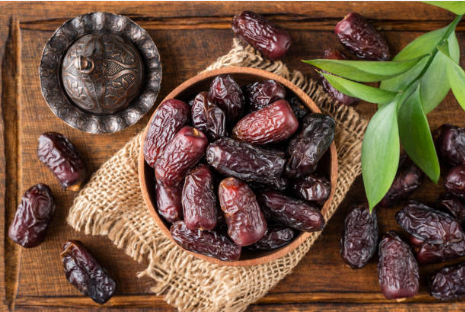
Medjool dates are one of the most common fruits used as a substitute for sugar. Credit: Getty Images.
Speaking of sweeteners, a number of nutrition experts advised using fruits as alternatives for sugar when baking.
Some of the popular “sweetener” fruits include Medjool dates and monk fruit as these fruits have low GI and their flavours can easily mix well with other ingredients.
Other tips for sweetening your baked goods with fruits include adding pureed fruits to batters, using fruit juices — that you squeezed, avoiding canned fruit juices as they contain a lot of added sugar — in place of sugar, and using dried fruits in place of chocolate chips.
For those of you who will attempt trying these substitutions, please keep in mind that the fruit will add additional carbohydrates to the recipe. Therefore, you will need to adjust the amount of treats that you will consume.
READ: How you can transform overripe bananas into a sugar-free chocolate cake using their natural sweetness
4. Increase the fibre
Adding extra fibre to your baked goods can help slow down the absorption of sugar into your bloodstream.
In the first section of this article, we discussed the diabetes-friendly flour alternatives that diabetics may use when baking. The good news is that these ingredients themselves are high in fibre too!
So, there you have it, folks! We hope this article can help you keep your blood sugar in check while enjoying some of your favourite baked treats!
(EDIT: As per @Thecheesequeen's comments below, it seems that oat flour and barley flour are not gluten-free flour alternatives. We apologise for this oversight and promise to be extra careful in bringing you health-related articles moving forward)
Sources:
How to eat a low-glycemic gluten-free diet. CeliAct. (n.d.). Retrieved April 10, 2022, from https://celiact.com/blogs/the-celiact-blog/96310150-how-to-eat-a-low-glycemic-gluten-free-diet#:~:text=Are Gluten-Free Diets Low,and devoid of whole grains.
What is gluten and what does it do? Johns Hopkins Medicine. (n.d.). Retrieved April 10, 2022, from https://www.hopkinsmedicine.org/health/wellness-and-prevention/what-is-gluten-and-what-does-it-do#:~:text=Rajagopal%20says%20gluten%20can%20be,don't%20have%20celiac%20disease
4 sugar alternatives for your diabetes diet. St. Luke's Health. (2019, October 16). Retrieved April 10, 2022, from https://www.stlukeshealth.org/resources/diabetics-guide-natural-sweeteners
Shoemaker, S. V. (2019, May 14). Stevia vs. Sugar: Nutrition facts, calories, carbs, and more. Healthline. Retrieved April 10, 2022, from https://www.healthline.com/nutrition/stevia-vs-sugar#sugar-comparison
The ability to create irresistible treats from scratch is a skill that's definitely worth learning. After all, there's no better way to show your loved ones how much you love them other than preparing a fresh batch of their favourite biscuits or a homemade cake.
However, it can't be denied that as we get older, we have to keep a closer eye on our health which often leads to some dietary restrictions.
There's no better way to show your loved ones how much you love them other than preparing a fresh batch of their favourite biscuits or a homemade cake. Credit: Getty Images.
If you have diabetes, you may need to take special care when baking. Here are some tips to help you enjoy your favourite baked goods while keeping your blood sugar levels in check:
1. Use ingredients that have a low glycemic index
Swapping ingredients that have a high glycemic index with those that have a lower GI is ideal. Credit: Getty Images.
When baking, you can often reduce the amount of sugar called for in a recipe by one-third without affecting the taste or texture of the finished product by substituting ingredients with a high glycemic index (GI) with those that have a lower GI.
For our members who have not encountered the term "glycemic index" before, it is basically a unit of measurement for how a specific food will affect your blood sugar levels.
Foods with a high glycemic index will release sugar into the blood faster and cause the body to produce more insulin and subsequently a spike in your blood sugar, while foods with a low glycemic index will have a more gradual effect.
The glycemic index is a scale of 0 to 100, with 100 being the highest. The lower the number, the slower the sugar is released into the bloodstream.
So, what are some of the most common baking ingredients with high glycemic indices?
Some of the common baking ingredients that have high glycemic indices include:
- All-purpose flour
- Baking powder
- Baking soda
- Cornstarch
If you noticed, the aforementioned ingredients are gluten-containing ingredients. For years, the practice of consuming gluten has been a topic of controversy among health and fitness enthusiasts.
It was said that gluten-containing flour is generally high in starch, which, in turn, has a high glycemic index.
Additionally, gluten can interfere with the body's ability to break down carbohydrates, which can also lead to a much quicker spike in blood sugar.
However, it should be noted that there are a number of misconceptions about consuming gluten-containing ingredients, with many people believing that gluten causes inflammation and reactions.
Internal medicine and obesity specialist Dr Selvi Rajagopal of Johns Hopkins Division of General Internal Medicine, said that gluten is "not inherently bad" for most people.
She explained: "We, as humans, have consumed gluten for as long as people have been making bread. For centuries, foods with gluten have been providing people with protein, soluble fibre and nutrients.”
"Gluten in itself, especially gluten found in whole grains, is not bad for healthy people whose bodies can tolerate it."
For a few of our members who are suspecting that consuming gluten has negatively impacted their health, Dr Rajagopal said that gluten can only be harmful to people suffering from the following conditions:
- Celiac disease - an autoimmune disease that causes damage to the small intestine in people who consume gluten.
- Non-celiac gluten sensitivity (gluten intolerance) - a gastrointestinal irritation caused by gluten in people who don’t have celiac disease.
- Wheat allergy - an allergy to wheat, but not to all grains or to gluten itself.
- Gluten ataxia - a rare neurological autoimmune disorder that causes your body to attack parts of your brain in response to gluten.
Source: Selvi Rajagopal, M.D. / Johns Hopkins Division of General Internal Medicine
So, how can we go about baking with this information in mind?
Gluten-free flour substitutes such as brown rice flour, almond flour, bran, chickpea, sorghum, tapioca flour, and coconut flour are good alternatives for gluten-containing flours with high glycemic indices.
For our readers who are not suffering from any conditions mentioned above and are allowed to consume gluten products, using whole wheat flour is also a good option as it contains a lower GI than white flour.
A caveat that you should keep in mind, however, is that most gluten-free flours don’t have a “stretch” to them, making the pastries “stiff” or “brittle” instead of a soft consistency.
It was advised that if you’re looking to prepare baked goods while keeping your blood sugar in check and without compromising the consistency of your pastries, you either use whole wheat flour or use a combination of gluten-free flour with gluten-containing ingredients such as baking soda and baking powder as long as your GP has given you a go-signal to consume gluten products.
2. Choose sugar substitutes
There are many sugar substitutes available that can be used in place of sugar in recipes. Some popular sugar substitutes include honey, agave nectar, maple syrup, and molasses.
However, did you know that these sweeteners are actually sugars themselves and have the same effects as regular white sugar when consumed?
Dietitians Mary Matone and Meredith Rofheart spoke to the Science Insider to discuss some of the most common myths about sugar, including a discussion on the use of honey and agave as sugar substitutes.
Ms Rofheart said: “We hear all the time, ‘if you want to cut sugar, instead of using sugar, use honey,’ the funny part of that is honey is sugar.”
“Honey and agave are commonly thought to be better sugars because they contain antimicrobial or antioxidant properties,” Ms Matone quipped.
However, for consumers to reap the antimicrobial benefits of honey and agave, they must consume a lot of these ingredients, which is not advisable as they almost have the same glycemic index as regular sugar.
Ms Matone explained: “What it really is coming down to is, how much are you consuming? Too much honey, too much agave, too much table sugar, are all going to have negative health consequences.”
WATCH: Dietitians Debunk 10 Sugar Myths
Credit: YouTube/Science Insider
So, what are some sweeteners that have low glycemic indices?
Experts at St Luke’s Health said that using stevia and erythritol as alternatives for table sugar can benefit those who are looking to keep their health in check.
It was said that stevia has a zero glycemic index and contains fewer calories than sugar. Aside from that, stevia does not change its flavour when heated, making it ideal for cooking, baking, and making hot drinks.
Meanwhile, St Luke’s Health’s website described erythritol as a form of naturally-occurring alcohol that the body does not process.
“Erythritol is a sugar alcohol derived from the fermentation of cornstarch or wheat. It has very few calories and has no impact on blood sugar. While erythritol is less likely than others to do so, sugar alcohols can upset your stomach. Start with small amounts and discontinue use if it causes any discomfort. With that said, it is safe even in relatively large quantities,” the website read.
We encourage our dear members to check with their doctors or dietitians to see if sugar substitutes are right for them.
3. Use fruit as sweeteners
Medjool dates are one of the most common fruits used as a substitute for sugar. Credit: Getty Images.
Speaking of sweeteners, a number of nutrition experts advised using fruits as alternatives for sugar when baking.
Some of the popular “sweetener” fruits include Medjool dates and monk fruit as these fruits have low GI and their flavours can easily mix well with other ingredients.
Other tips for sweetening your baked goods with fruits include adding pureed fruits to batters, using fruit juices — that you squeezed, avoiding canned fruit juices as they contain a lot of added sugar — in place of sugar, and using dried fruits in place of chocolate chips.
For those of you who will attempt trying these substitutions, please keep in mind that the fruit will add additional carbohydrates to the recipe. Therefore, you will need to adjust the amount of treats that you will consume.
READ: How you can transform overripe bananas into a sugar-free chocolate cake using their natural sweetness
Sweetener | 1 tbsp sugar | ½ cup of sugar | 1 cup of sugar |
Stevia powder | 1/16 tsp | ½ tsp | 1 tsp |
Stevia liquid | 1/16 tsp or 6 drops | ½ tsp or 48 drops | 1 tsp or 96 drops |
Erythritol | 1 tbsp + 1 tsp | ⅔ cup | 1 ⅓ cup |
Monk fruit (liquid) | 10 drops | 80 drops | 160 drops |
Monk fruit (extract) | ¼ tbsp | 2 tbsp | 4 tbsp |
Date sugar | 1 tbsp | ½ cup | 1 cup |
Date syrup | ⅓ tbsp | ⅓ cup | ⅔ cup |
Sweetener to sugar ratio
4. Increase the fibre
Adding extra fibre to your baked goods can help slow down the absorption of sugar into your bloodstream.
In the first section of this article, we discussed the diabetes-friendly flour alternatives that diabetics may use when baking. The good news is that these ingredients themselves are high in fibre too!
So, there you have it, folks! We hope this article can help you keep your blood sugar in check while enjoying some of your favourite baked treats!
(EDIT: As per @Thecheesequeen's comments below, it seems that oat flour and barley flour are not gluten-free flour alternatives. We apologise for this oversight and promise to be extra careful in bringing you health-related articles moving forward)
Sources:
How to eat a low-glycemic gluten-free diet. CeliAct. (n.d.). Retrieved April 10, 2022, from https://celiact.com/blogs/the-celiact-blog/96310150-how-to-eat-a-low-glycemic-gluten-free-diet#:~:text=Are Gluten-Free Diets Low,and devoid of whole grains.
What is gluten and what does it do? Johns Hopkins Medicine. (n.d.). Retrieved April 10, 2022, from https://www.hopkinsmedicine.org/health/wellness-and-prevention/what-is-gluten-and-what-does-it-do#:~:text=Rajagopal%20says%20gluten%20can%20be,don't%20have%20celiac%20disease
4 sugar alternatives for your diabetes diet. St. Luke's Health. (2019, October 16). Retrieved April 10, 2022, from https://www.stlukeshealth.org/resources/diabetics-guide-natural-sweeteners
Shoemaker, S. V. (2019, May 14). Stevia vs. Sugar: Nutrition facts, calories, carbs, and more. Healthline. Retrieved April 10, 2022, from https://www.healthline.com/nutrition/stevia-vs-sugar#sugar-comparison
Last edited by a moderator:



